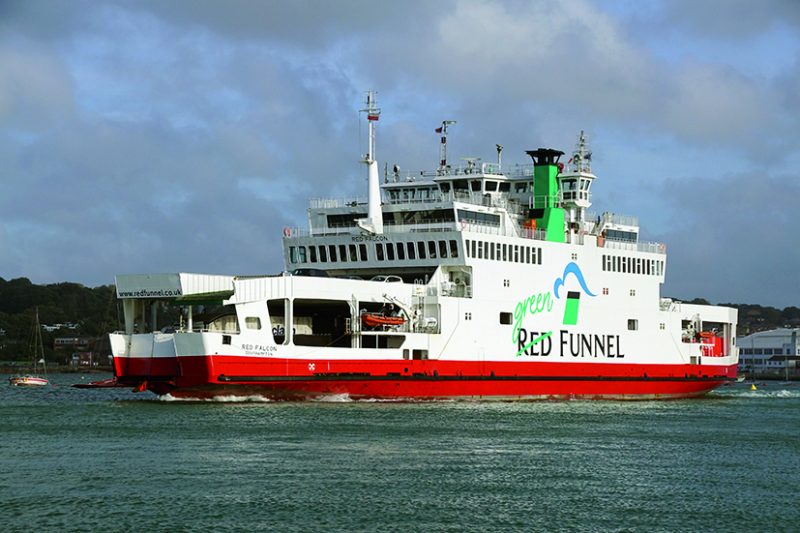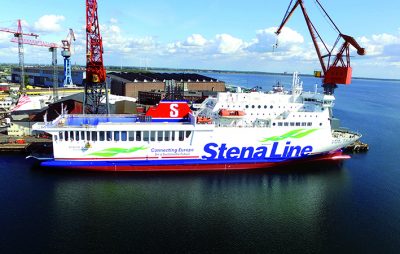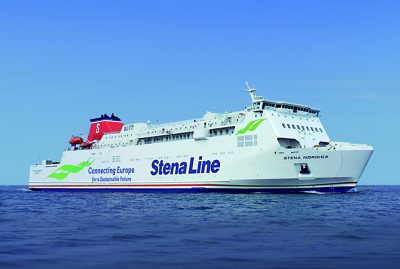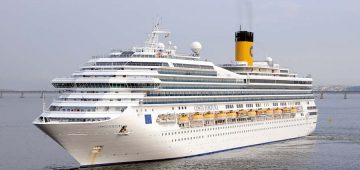Joint Effort

Fred. Olsen Express and Baleària have joined forces to link the Spanish mainland and Canary Islands with a ferry service by the end of the year. The two companies will initially run three weekly services for passengers and freight between the port of Cadiz or Huelva and the Canary Islands under the Canary Bridge Seaways (CBS) project, from mid-November 2018. Seatruck’s Clipper Pennant is one of the two vessels chartered for the new venture. Following the sale of Trasmediterránea to ARMAS the latter had operational limits imposed upon it by CNMC (National Commission of Markets and Competition). The CBS Project takes advantage of these limits but FRS has a had start as they opened a Huelva-Canary Isles service on 7th July using the 29,514gt/2011 built ARMAS ship Volcan del Teide (above). Baleària has recently received a grant of €11.8 million from the European Commission to retrofit five of its ferries to run on LNG. The funding represents 20% of the total sum of €59 million needed for the project. The project is entitled LNGHIVE2 and will be implemented from late 2018 to 2021 and involves the ferries Nápoles, Abel Matutes, Sicilia, Bahama Mama and Martín i Soler.
Rebranded Raptor

On 17th September Red Funnel Ferries announced a long-term environmental strategy under the heading Red Goes Green. This strategy seeks to showcase the environmental successes of recent years and highlight a wide range of new green initiatives, including measures to change consumer behaviour in line with the company’s commitment to operate in an environmentally sustainable and sympathetic manner. The 4,128gt/1994 built Raptor Class vehicle ferry Red Falcon (above) is being used for this purpose. To raise public awareness, the ship has been rebranded with a green funnel and logo. A series of mishaps beset the Red Funnel fleet starting with the 342gt/ 2003 built Red Jet 4 suffering a technical failure on approach to Cowes Harbour on 21st September. The vessel needed assistance to her berth and the service was then suspended as the catamaran could not move without tug assistance. On the morning of 27th September, the 4,075gt/1996 built Red Eagle came into contact with moored yachts at West Cowes after departing East Cowes in dense fog. The reason for the vessel’s deviation off course was unclear but an investigation was launched and the ship was withdrawn for the remainder of that day. Two days later the 4,128gt/1994 built Red Falcon was involved in a collision with a small motor vessel as she crossed the Solent between Calshot and Cowes at around 1640. The vessel was withdrawn from service for an investigation but there was no damage done to the ferry.
Then, on 21st October, the Red Falcon was in trouble again. On entering Cowes Harbour in fog the ferry collided with a number of yachts, sinking one before running aground. Search and rescue lifeboats were launched after a member of the public called 999 reporting that he had heard cries for help within the harbour. The UK’s marine accident investigation branch (MAIB) is investigating the case and the captain and first mate of the vessel have been suspended from duty.
Mediterranean Collision


On the morning of 7th October the 17,907gt/1997 built Cotunav Ro-Ro ferry Ulysse collided with the anchored unladen 54,592gt/2005 built containership CSL Virginia 28km northwest of Cape Corsica at around 0730 (above). The Ro-Ro ship effectively “T-boned” the CSL Virginia and punched a hole in her starboard side hull. Bunker tanks were ruptured, which resulted in a 12.5-mile oil slick.
Royal Ceremony
Wightlink’s new 8,041gt/2018 built flagship Victoria of Wight was the centre of attention on 20th September at Fishbourne where her naming ceremony took place. The ship occupied the ferry berth once the 1200 sailing had departed and guests were assembled on the upper linkspan at around 1300 with the special guest, HRH Sophie, Countess of Wessex, arriving at around 1315. The ceremony featured a speech by Wightlink CEO Keith Greenfield, a blessing by The Right Reverend Christopher Foster, Lord Bishop of Portsmouth with the Countess of Wessex then formally naming the ship and triggering the traditional breaking of a bottle of champagne on the ship’s hull.
Fleet Changes
Stena Line began operating the 21,005gt/1999 built Somerset on the Europoort (Rotterdam)-Harwich route from 19th September under a 3-year bareboat charter, joining the 10,572gt/1997 built Bore Bay.

On 16th September the 14,551gt/2005 built Stena Vinga (above), formerly the BornholmerFaergen vessel Hammerodde, entered service on the Frederikshavn-Gothenburg service after two weeks at the Öresund shipyard in Landskrona undergoing transformation into a Stena ship. The Stena Vinga replaces the 13,294gt/1982 built Stena Gothica. The other displaced BornholmerFaergen ferries have also found new homes following the company’s loss of the Bornholm ferry contract. The 10,371gt/2011 built Austal fast ferry Leonora Christina was sold to Fred. Olsen Express as the Betancuria Express for service in the Canary Isles and the 6,402gt/2000 built Villum Clausen went to Seajets in Greece as the World Champion Jet, where she arrived on 19th September having departed Bornholm on 8th September.

The 24,206gt/2000 built Stena Nordica (above) entered service on the Karlskrona-Gdynia service on 6th October replacing a Ro-Ro ship, thus adding a fourth Ro-Pax ship to the route. The Stena Nordica joins the 39,191gt/1987 built Stena Vision, 39,193gt/1988 built Stena Spirit and 22,308gt/2007 built Stena Baltica and the number of departures per week is now 46, which is a record on this service.





Comments
Sorry, comments are closed for this item